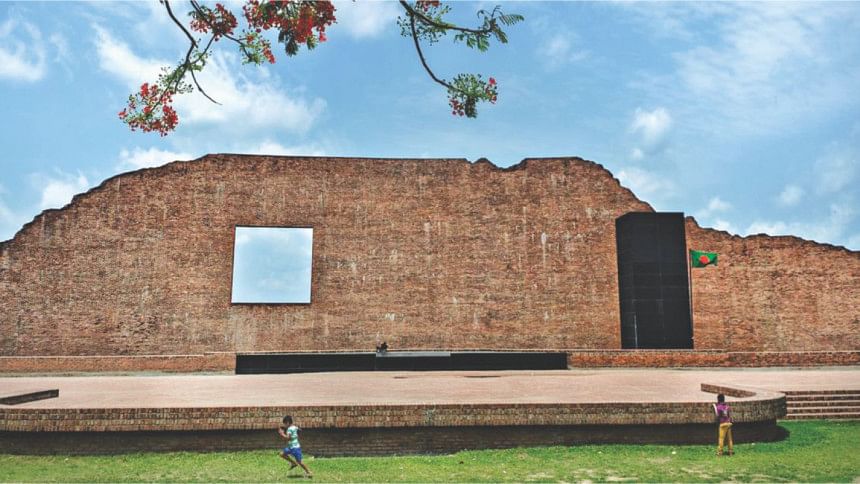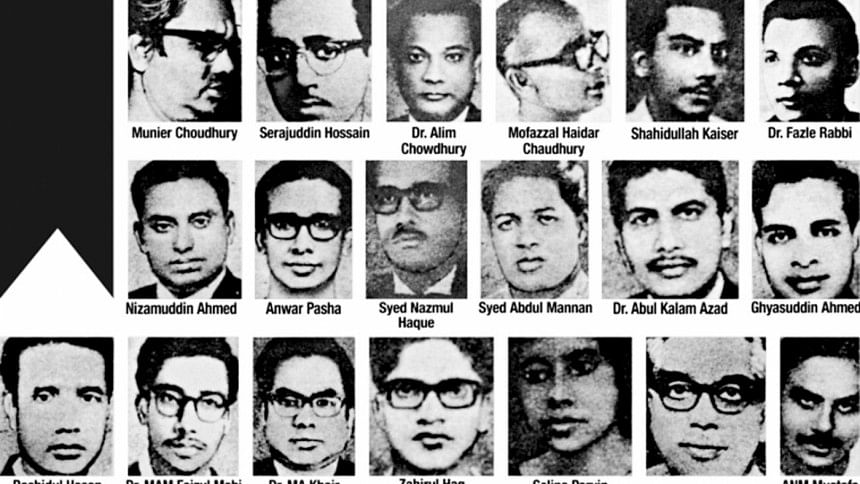A Tale of a Tragedy

Photo: Abu Raael Rony
It was December 11, 1971. A N M Golam Mostofa, Veteran journalist of the then daily Purba Desh was catering to family duties. The time was hectic for the family as Mostofa's nine-month-old son Anirban cried the whole night. Around 4 am in the morning, just after the Fajr prayer, Mostofa stepped outside to the porch of their Gopibagh house. Mostofa's father was sitting there counting the Tasbih while Mostofa continued to sooth his son. Anirban's mother was then caring Mostofa's daughter Urmi, and fell asleep when the family witnessed the most tragic incident of their lives. The Pakistan supporting group Al Badr surrounded their whole household and they asked for Golam Mostofa. Standing right in front of them, Mostofa asked what was this all about. They told him it was related to official work and he needed to go to Purba Desh's office immediately. Mostofa put down Anirban from his lap and left with them and that was the last he was seen by anyone. After five days, on 16 December, piles of dead bodies were found in Rayar Bazar, near a brick factory. After 45 years of independence, we know this area of Rayer Bazar as the Martyred Intellectuals Memorial, which stands to salute intellectuals such as Golam Mostofa, who gave up their lives for our country.
The blueprint of killing the cream of the crop of soon to be Bangladesh was nothing but a desperate attempt by the Pakistani Army. Though during the nine months of war they killed many intellectuals, this mass killing started from 11 December and even continued after December 16. The largest number of assassinations took place on December 14. On that day the Pakistani Army with the help of their local collaborators, most notably the alleged Islamist militia groups Al Badr and Al Shams rounded up over 200 intellectuals from East Pakistan including professors, journalists, doctors, artists, engineers, and writers.
Noted intellectuals who were killed between March 25 and December 16, 1971 in different parts of the country included Golam Mostofa, Govinda Chandra Dev, Philosopher, Professor Munier Chowdhury, Litterateur, Dramatist, Professor Mufazzal Hayder Chowdhury, Litterateur, Professor, Anwar Pasha Litterateur, Professor, Dr Mohammad Fazle Rabbee, cardiologist; Dr. Alim Chowdhury, ophthalmologist; Shahidullah Kaisar, journalist, Nizamuddin Ahmed, Reporter, Selina Parvin reporter; Altaf Mahmud, lyricist and musician, Dr. Hobibur Rahman, Professor of Mathematics, RU; Sukhranjan Somaddar, Professor of Sanskrit ; Mir Abdul Quaiyum, Professor of Psychology; Dhirendranath Dutta, politician, Ranaprasad Saha, philanthropist; Lt. Col. Moazzem Hossain, ex-soldier, Mamun Mahmood Police Officer, and many others. They were first taken blindfolded to torture cells in Mirpur, Mohammadpur, Nakhalpara, Rajarbagh and other locations in different sections of the city and were later executed en masse, most notably at Rayerbazar and Mirpur. To remember these mass genocides, December 14 is mourned in Bangladesh as Shaheed Buddhijibi Dibosh .

After the war, it is estimated that more then 1,111 intellectuals were murdered during the whole war including 991 educationists, 13 journalists, 49 physicians, 42 lawyers 16 other writers, artists and engineers. What is shocking is that these killings even continued after the war ended as there are reports and accounts of militant fire from the armed Pakistani soldiers and their collaborators. One famous account is of the famous filmmaker Zahir Raihan who on January 30, 1972 got a phone call saying his brother Shahidullah Kaisar was still alive and was asked to come get him. Raihan was killed that same day by Pakistani supporters and collaborators.
In 1993 Government of Bangladesh decided to establish a memorial at the site of this bestial act. The Ministry of Housing and Works Department and the Institute of Architects Bangladesh jointly organised a national level architectural competition for the design of the memorial "Badhya Bhumi Smriti Soudha". Out of 22 entries the design proposal of Architect Farid Uddin Ahmed and Architect Md Jami al Shaf were selected. The main aspect of the monument is the 17.68m high, 0.91m thick and 115.82m long curved brick wall, representing the original brickfield of Rayer Bazar where the dead bodies were found. The wall itself is broken at the two ends, representing the depth of grief and sorrow. In front of the curved wall is a still water body from which rises a black stone column, symbolizing grief.
Interestingly enough, a lot of the bodies of the intellectuals were not found even in the piles of Rayerbazar. Golam Mostofa was included in this list. Ironically, Golam Mostofa was supposed to flee Dhaka on the same day he was taken away. Urmi Mostofa, daughter of Golam Mostofa, is now a script writer and the mother of two. "I may not have seen my father but I recall him through his works," she says. "They gave their lives because they shined in what they did. I think the best way to remember them is through their work—because that is what gave our country hope to stand on its own."

 For all latest news, follow The Daily Star's Google News channel.
For all latest news, follow The Daily Star's Google News channel. 



Comments